Crew 281 Journalist Report 21 May 2023
Journalist Report
By: Rachel Jones
Sol 7, MDRS is Heaven!
A bit of a personal rant before I start my report today. My husband has never found the same joy as I in rucking. What is rucking? It’s an exercise where you wear a weighted backpack and walk. I’ve participated in a GORUCK Challenge and loved it. It taught me to wear a heavy pack and perform various tasks (usually in gloves). Because of this, I feel more confident wearing the EVA suit and performing complicated tasks with gloves on. Furthermore, from my personal experience in today’s EVA, rucking helps train you for Mars.
So, what did I do to feel so superior in my abilities? I beat a drone. (Yes… I know that it was only the terrain and my amazing ability that allowed me to succeed today, and it likely might not in the future).
Sol 7 started like many days with an EVA. Ana, Ritu, and I exited the Hab to perform three separate missions. First, we re-tested the Pegasus scoop. This round of testing avoided the issues we had with the previous deployment and, ultimately, demonstrated the product.
The second test involved baselining a new Mars medical drone supply delivery concept. Ritu first flew the drone from our start position, raised it to 10 meters, and then flew in a straight path 60 meters to our “downed” astronaut model: Ana. Once the drone reached Ana, it was lowered to allow retrieval of a possible payload and then flew back to the starting point. We did several control flights recording the times and battery the drone took without a payload before we tested the delivery system with a 40-gram payload. For the final test, I raced the drone’s time and took the payload to the downed astronaut. I won… but in a real-case scenario, I would not have been able to don my equipment and exit the Hab in the time the drone could have.
The third part of our EVA mission involved checking on my antenna setup. Every afternoon we have a light shower and high winds. I wanted to ensure my antenna was still dry and stable.
After we returned from a successful EVA, KC cooked lunch. It was a mix of noodles, rehydrated vegetables, black bean burger mix, and Alfredo sauce. Megan also made some cinnamon rolls for an afternoon snack.
This afternoon was a lot of report writing for the crew (in addition to what is becoming our routine chores). We each worked on a section for the Mid-Mission report. Megan checked her chocolate seeds and the GreenHab. Ritu downloaded her drone measurement results. Ana cleaned and stored her robotic scoop. KC checked batteries, tunnels, toilets, and our water level. Our crew checks the water level more than required as we compete and challenge ourselves to use less.
I was on the radio making contacts. I was able to reach GA, WA, and TX. The bands might not be great but they were better than yesterday. Dr. Tamitha Skov in her Space Weather Report, suggested the bands might not be ideal this weekend ( https://www.youtube.com/watch?v=xSQYjH6D_YA&t=1s ).
This evening we are making smashed avocado tacos, discussing our various reports, and planning tomorrow’s long EVA.
I’d appreciate it if you could catch me on the air but for now, signing off from Mars.


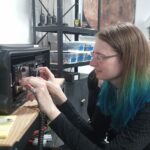
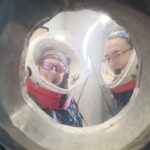
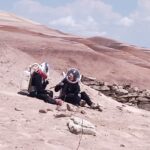
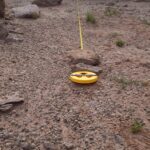
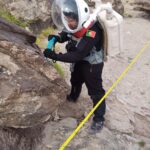

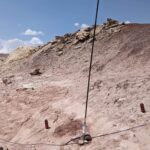
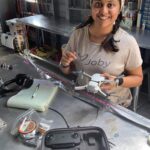
You must be logged in to post a comment.